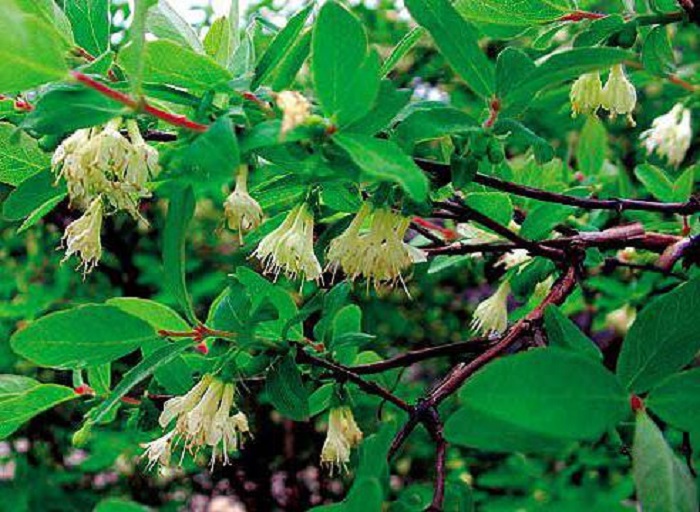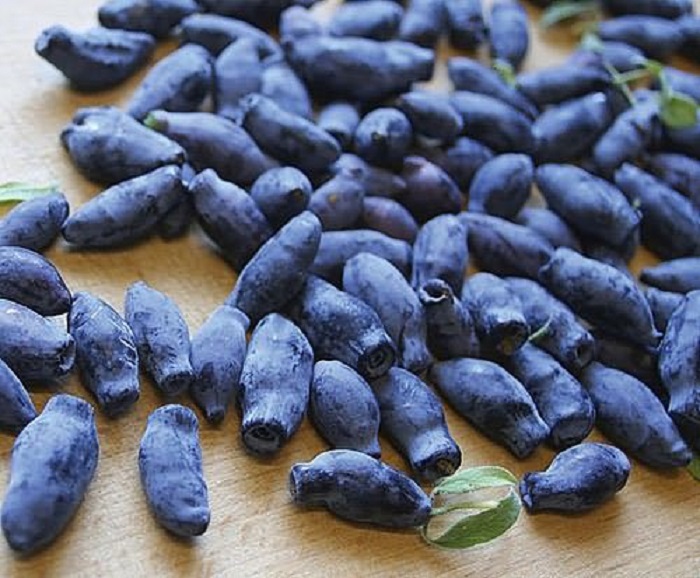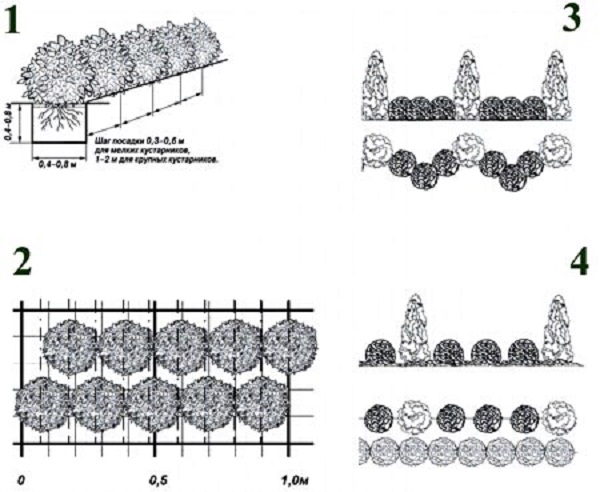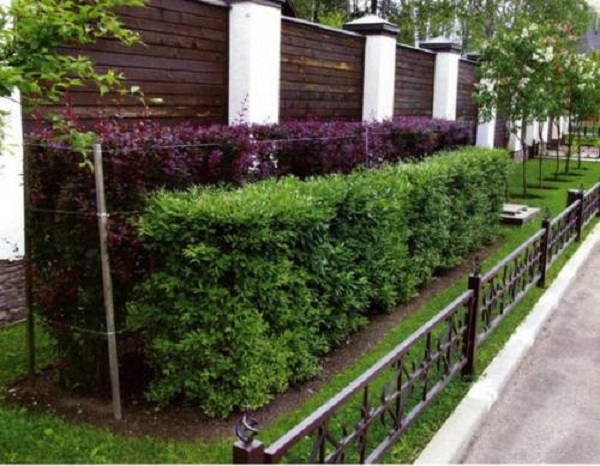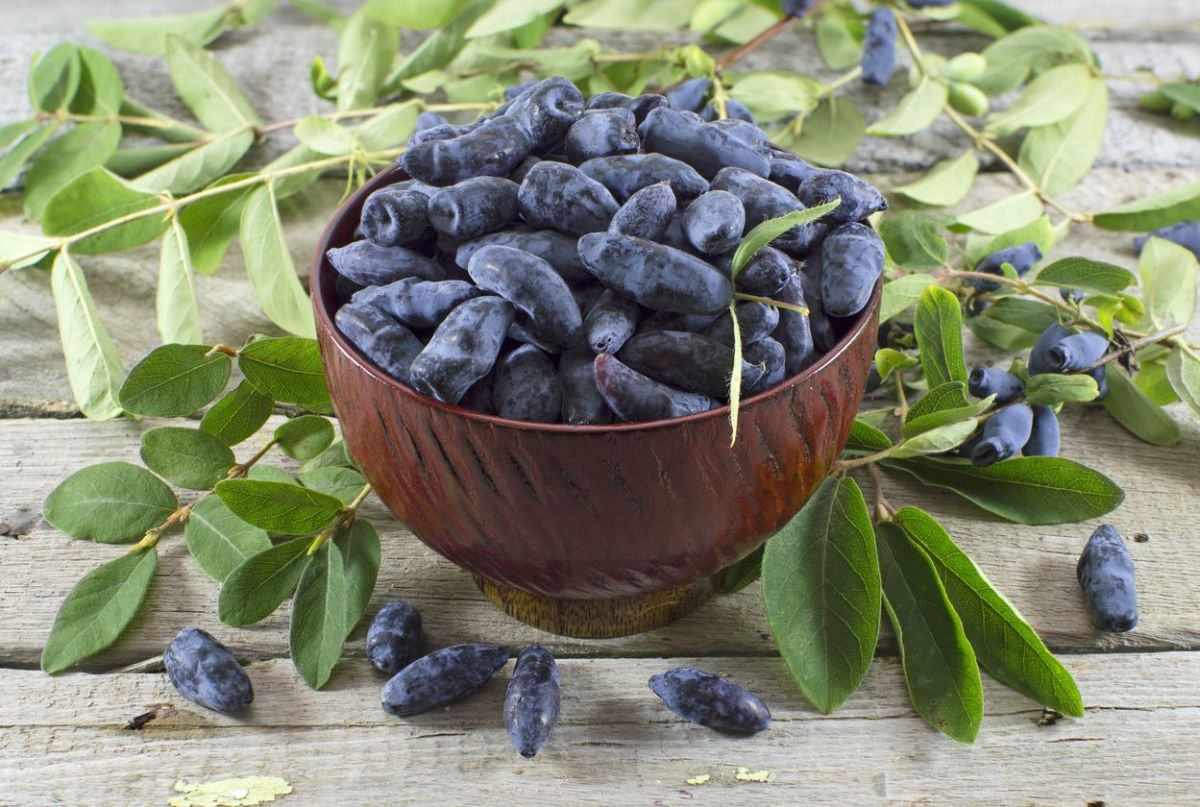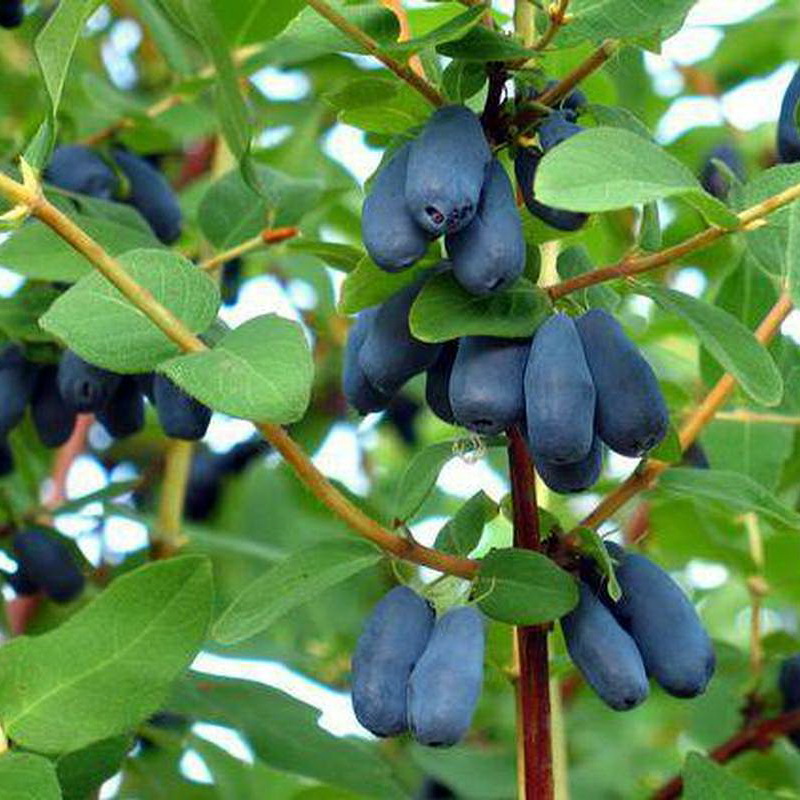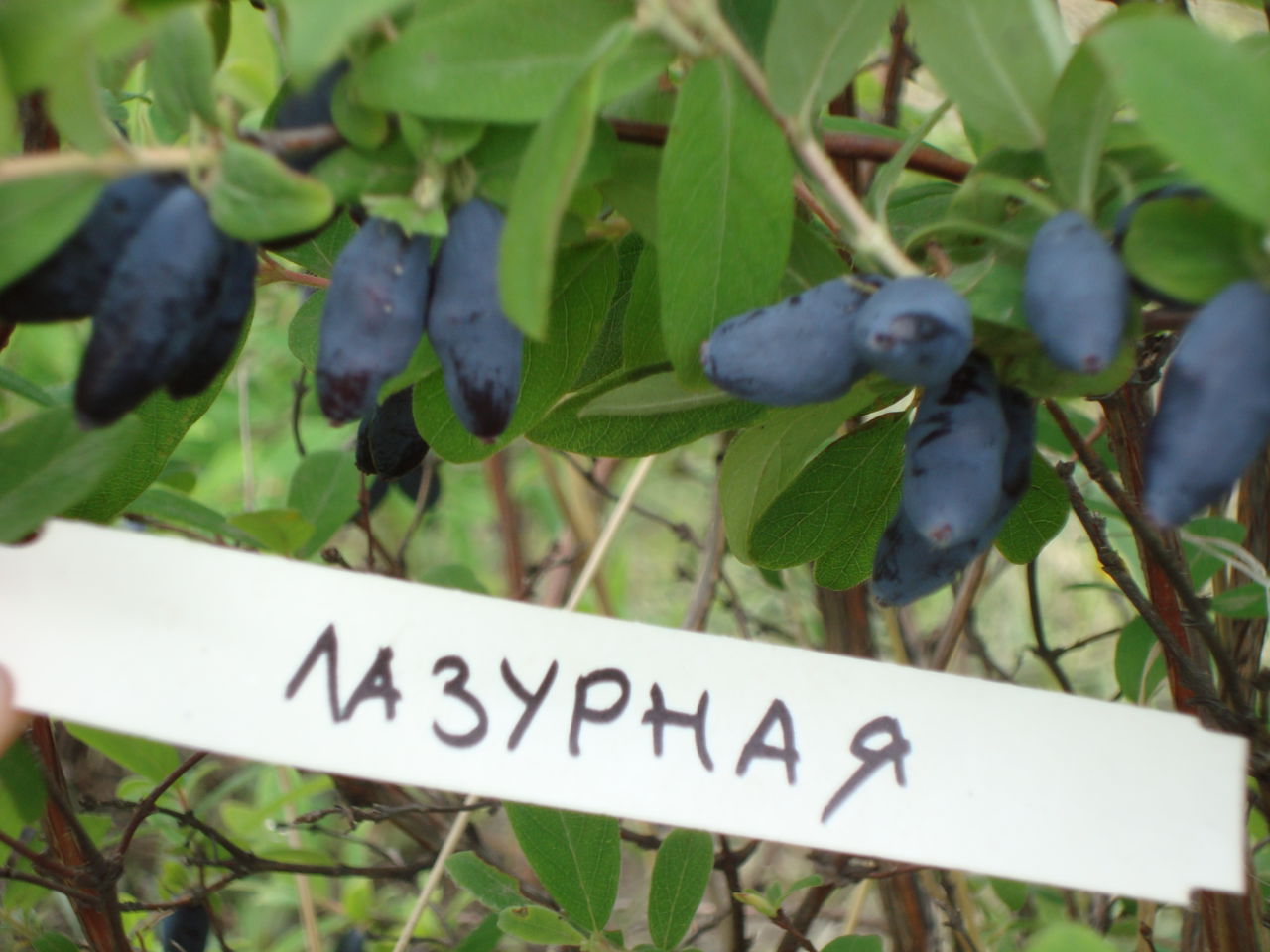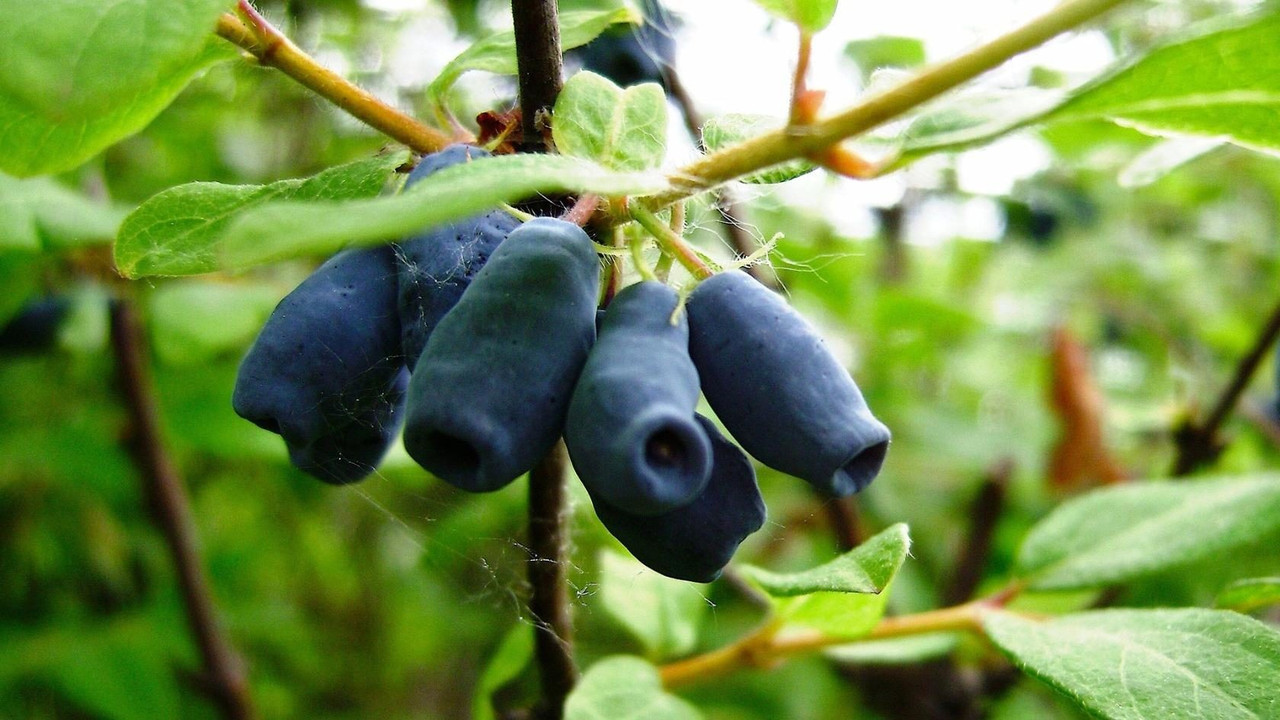Honeysuckle, or Lonicera, is named after the German scientist Adam Lonitzer, who worked in the 16th century. This genus of plants unites over 150 species. Most species grow in temperate regions, in the undergrowth of mixed lowland and mountain forests of the Northern Hemisphere.
Content:
Characteristics and features of the variety of honeysuckle
Currently, there are many different decorative species of this wonderful plant. Depending on the variety, the color of the fruit can be blue, orange, blue or purple. The most popular varieties are with edible berries. Gardeners love this early berry with a unique range of vitamins and minerals. In addition, honeysuckle has healing properties: it cleanses the body of harmful salts of heavy metals, helps restore strength and lowers blood pressure.
In our country, most often in the gardens there is a honeysuckle variety Nymph, bred by domestic breeders of the experimental station. Vavilov. This varietal material belongs to the universal late-ripening dessert species and has the following characteristics:
- The height of the bush reaches up to 1.5 m, with a rounded crown and raised branches;
- The yield of the plant is abundant, the size of the berries reaches 1.3 grams;
- After two to three years from one plant of the Nymph variety, you can harvest from 2 to 6 kg of wonderful sweet berries;
- The shape of ripe berries resembles a spindle with a blue-violet color, covered with a light waxy bloom;
- The berry taste is sweet, with a fragrant smell;
- The plant can bloom with flowers of a nondescript light yellow hue;
- Shoulder. Slightly spreading bush with long, powerful shoots;
- Frost resistance. Honeysuckle variety Nymph is a cold-resistant plant that can withstand winter low temperatures. The bush does not need to be additionally covered;
- Sprinkling is almost minimal - even when fully ripe, the berries are crumbled in a minimal amount;
- Edible Honeysuckle Nymph does not need special shaping of the bush, so there is no need to regularly prune the branches of the plant. The first years the plant grows slowly, only after a few years can a small thinning of the crown of the bush be carried out.
On a note. The varietal view of Nymph looks attractive in autumn and is often used by gardeners to create beautiful garden landscape compositions, for example, a beautiful hedge.
Features of growing varieties
In order for the variety "Kamchatka Honeysuckle Nymph" to give a good harvest, it is necessary to create favorable cultivation conditions for the plant:
- The soil. Honeysuckle is recommended to be planted on light loamy soil with low or neutral acidity. If the soil is too acidic, then you can reduce the acidity by liming the soil and add ground limestone or dolomite powder. In this case, such mineral additives will simultaneously serve as mineral fertilizers, enriching the soil with calcium and magnesium;
- Lighting and shade. If we talk about the illumination of the Nymph honeysuckle plant and make a description of the variety on the problem of possible shade, then it should be said about the importance of sunlight for the ripening of a good harvest. Best of all, the honeysuckle berry bush grows in open sunny areas not shaded by trees and outbuildings;
- Humidity and watering. For normal plant growth, the soil must not be allowed to dry in the near-stem holes.In the hot season, honeysuckle is watered at the rate of 10 liters of water per plant;
- Landing. The most common way of planting a plant is to plant ready-made seedlings, which are best harvested as cuttings in the fall of September or October. The long dormant period allows the cuttings to take root, and by the spring the seedling will be ready to be planted in open ground. Before planting, it is advisable to fertilize the land with the following components: superphosphate in the amount of 40-60 g., Potassium salt 25-30 g. And any organic fertilizer in the amount of 8 to 10 kg. The proposed composition is applied to an estimated area of 1 m². After applying complex fertilizing, it is advisable to re-dig the soil. The honeysuckle root system is shallow, located along the earth's surface, so when planting seedlings there is no need to dig deep holes. The bushes are planted at a distance of 1.5 to 2.5 meters from each other. Densely planted seedlings after a few years will create excessive shading, which can lead to exposure and oppression of the lower branches of the bush.
"Nymph", like all decorative varieties of honeysuckle, needs regular feeding. The plant begins to fertilize at the age of three with nitrogen fertilizers. For this purpose, gardeners often use ammonium nitrate. Top dressing is carried out in early spring when the snow is melting, the "vitamin" mixture is added at the rate of 1 tablespoon under each bush. Instead of nitrate, you can use another popular fertilizer - urea. It is diluted in water at the rate of 30 g per 10 liters of water. After harvesting the fruits, in late summer or early autumn, the honeysuckle is fertilized with wood ash (100 g per 1 m²) and double superphosphate at the rate of 30 g per 1 m².
Lack of sunlight leads to a deterioration in the palatability of the berries and interferes with the normal growth of the plant. Abundant watering has a beneficial effect on taste: the berries are more juicy and sweet.
Advantages and disadvantages of the variety
Despite the constantly growing popularity among gardeners, the varietal type of Nymph has a number of advantages and disadvantages. Weighty arguments in favor of choosing this variety can be considered:
- Winter hardiness. The plant survives even in the harsh climatic regions of our country. Moreover, honeysuckle does not need additional protective shelters;
- Stable high yield. Even after growing for several years, the berries are not crushed, and the taste remains at the original level;
- Resistance to various diseases. This wonderful property of honeysuckle will allow gardeners to abandon the treatment of plants with chemicals and get an environmentally friendly harvest;
- Caring for the bush is quite simple and consists in annual feeding and rare pruning.
A related variety, Violet honeysuckle, has similar advantages.
Disadvantages of the "Nymph" variety:
- Pollination. When buying seedlings sellers recommend to buy special varieties of honeysuckle, which serve as pollinators, together with "Nymph". This nature of additional pollination is due to the fact that the flowers of the edible variety Nymph are themselves sterile, therefore other varieties of honeysuckle are needed for cross-pollination. Such "neighbors" help the Nymph to take place as a fruit plant. During the ripening period, a small amount of berries may crumble;
- Adult specimens must be thinned periodically.
Honeysuckle Nymph is not a “capricious” plant and does not need special agrotechnical care. A plant planted in a garden or in a summer cottage will delight gardeners with a good harvest and generously present with tasty and healthy berries for several decades.
When buying plants from specialized nurseries, it is recommended to carefully read the recommendations of sales consultants. A properly selected “neighbor” pollinator can significantly improve the quality and quantity of the crop.
